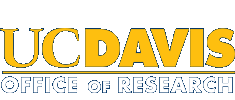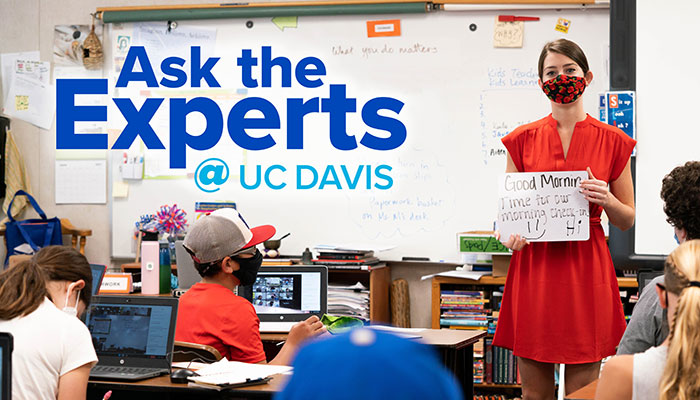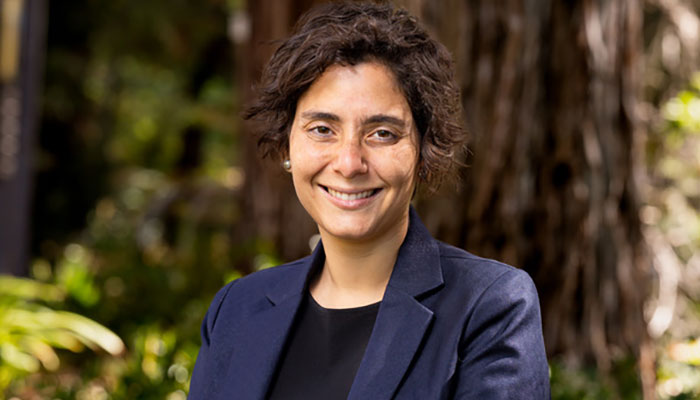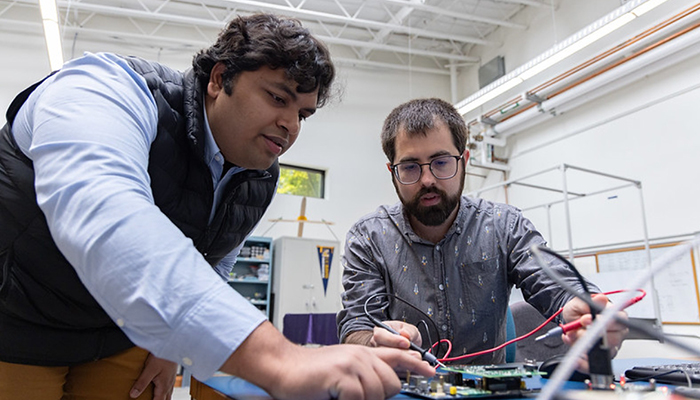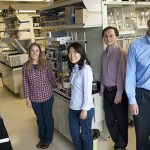UC Davis Interdisciplinary Research Teams Join Forces to Prepare for the Next Pandemic
Highlights From the Team Research Forum: Catalyzing Innovation for Emerging Threats
By Neelanjana Gautam
Since the World Health Organization declared Covid-19 as a global pandemic on March 11, 2020, scientists, engineers and clinicians have been producing and sharing insight at a rapid rate to respond to the challenges posed by the pandemic. So far, research on Covid-19 has led to an understanding of the biology of SARS-CoV-2, how the virus interacts with the immune system, the clinical manifestations, effects of long covid, vaccine development, treatment and prevention strategies, among others.
Although we have come a long way from the first throes of the pandemic thanks to the continuous contributions from the science community, more research is underway to determine future risks and ways to mitigate them based on what was learned during this pandemic.
On April 22, the Office of Research hosted a Team Research Forum with six experts to discuss the strength of interdisciplinary research in predictive intelligence so humans can better prepare themselves to navigate the risks of future pandemic challenges. The following summary highlights how scientists are exploring different techniques to understand key pathogens and viruses to assess future threats.
Christine K. Johnson, director of the EpiCenter for Disease Dynamics, professor in the School of Veterinary Medicine
Preparing for the Next Pandemic: Catalyzing Innovation for Emerging Threats
Johnson and her colleagues have been working to understand emerging disease threats through a One Health lens in collaboration with partners in Latin America, Africa, and Asia. As one of NIAID’s Centers for Emerging Infectious Disease (CREID), the EpiCenter for Emerging Infectious Disease Intelligence, they are investigating emerging and re-emerging viruses in transitional ecosystems where landscape change is most likely to influence disease transmission from wildlife to humans.
Epidemics and pandemics in humans are typically the result of spillover from wildlife, but increases in population growth, especially in tropical regions, as well as social and economic inequality, trade and travel are likely to increase the scale and impact of emerging diseases. Not only do these factors facilitate disease spillover, but they also increase the breadth of the epidemic. Johnson also warns that deforestation, habitat loss and fragmentation and climate change are likely to increase the risk of disease spillover. These drivers play a critical role in the frequency of emerging infectious diseases by letting people come into closer contact with animals around agricultural production and development. According to Johnson, landscape change has the potential to bring more adaptable wild animals into closer contact with humans, which poses risk for disease transmission.
Johnson’s team is focused on viruses with pandemic potential likely to emerge in tropical countries, as well as ongoing spillover and spillback of SARS-CoV-2 between animals and people in the coming years. Teams have engaged communities in remote settings and brought together medical and veterinary scientists to facilitate early detection and characterization of emerging threats. The team is also excited to be working with colleagues in other disciplines towards development of new sensor technology, data systems and modeling that will open up exciting pathways for innovation.
Cristina Davis, professor in the Department of Mechanical and Aerospace Engineering and associate vice chancellor for Interdisciplinary Research and Strategic Initiatives
Analyzing Exhaled Breath
Davis’ group is currently studying human exhaled breath. Davis explains that besides exhaling CO2, humans also exhale metabolites as volatile and nonvolatile compounds. These can be measured noninvasively with the right engineered systems.
She is currently collaborating with Nicholas Kenyon, professor of Medicine at UC Davis Health. They are working on collecting data from Covid positive patients by analyzing their breath samples using a mass spectrometer. The results indicate a clear distinguishing pattern between Covid positive and negative samples.
Davis said that researchers are observing reasonably accurate sensitivity and specificity in this ongoing study. In addition to standard PCR tests and over-the-counter at-home rapid antigen tests, these new mechanisms can help build a scalable solution to detect emerging infectious diseases and how to respond to them.
Davis has also worked with the US marine mammal program to collect breath samples from dolphins and other marine mammals in the past. In addition, her team has also developed a small chip-based sampler that can collect volatile compounds from the environment and measure them in the field or in the laboratory. These samplers are portable and can be carried around by humans to collect timestamped and geolocated environmental data.
Zhaodan Kong, associate Professor in the Department of Mechanical and Aerospace engineering
Using Artificial Intelligence/Robotics in Wildlife Reservoirs in Remote Settings
Kong’s group is working on robotics and artificial intelligence to characterize and sample wildlife reservoirs in remote settings. Bat caves present a compelling scenario for robotic exploration since they are dangerous and hard for humans to navigate. To help scientists collect high quality data, Kong proposes to use drones that are equipped with LIDAR (light detection and ranging) and SLAM (simultaneous localization and mapping) to first build a 3D map of the cave. For data collection, drones can then be attached with thermal cameras, chemical sensors, and physical manipulators that can detect animal density, volatile organic compound (VOC) density, pathogen types, as well as identify hotspots for further exploration. This data can be time stamped and superimposed on the 3D map in real-time, and then shared for scientific experiments.
Kong and his group are also working on problems related to autonomous navigation, guidance and control in complex environments, tracking of moving animals and swarms, aerial manipulation for physical sampling, etc. In a recent study, using machine learning techniques they were able to make a drone fly and navigate through a forest terrain by itself using only on-board sensors, but without any human intervention, or a map of the environment, or even GPS information.
View Recording
Tierra Smiley Evans, Research Faculty, One Health Institute
Using Non-Invasive Techniques for Sampling Wildlife
Evans and her team are working on sampling wildlife using non-invasive techniques. For pandemic surveillance, she is focusing on sampling non-human primates –– both habituated and non-habituated –– as they flourish at the transitional ecosystem zone between forest and urban landscapes. This gives them more opportunities for human contacts, diverse species mixing, higher viral host plasticity and higher possibilities for transmission.
To understand the behavior of the primate species as well as that of the individual populations, Evans is working on data harnessing technologies using mobile phones where the local community can report information about primate diseases and their movements. In addition, she is also developing simple biological monitoring techniques, such as micro-sampling mechanisms, eliminating cold-chain requirements, and collecting wildlife byproducts.
Pranav Pandit, Researcher, One Health Institute
Developing Intelligence About Emerging Viruses and Pathogens in Wildlife
Pandit is working on developing intelligence and mitigation strategies for emerging viruses and pathogens with an evolutionary trajectory starting from wildlife reservoirs and eventually spilling into the human population. His team has developed models to predict the diversity of emerging zoonotic pathogens and identify missing or unobserved hosts that can carry these viruses. Pandit is also developing an event-based surveillance system using machine learning techniques that can do early detection of wildlife health events, such as morbidity and mortality events, that increase the release of these pathogens and may have public health consequences. His team is also working on forecasting the evolutionary trajectory of novel zoonotic viruses, assessing their risk to humans and prioritizing mitigation plans.
Jonathan Eisen, professor in the Department of Evolution and Ecology
Developing Field Guide for Microbes
Eisen discussed the need to develop a field guide for microbes with a global, coordinated effort where participants can collect and share data, including their identification and characterization. An ongoing effort after which the microbe surveillance approach can be modeled is how surveillance is conducted for wastewater. Wastewater surveillance has been ramped up massively for detection of SARS-Cov-2 and other pathogens in the face of the pandemic. Eisen said that this could be mimicked, for example, at field sites linked to animals, where surveillance of water coming out of caves, farms, etc., could be a useful concept to detect SARS-Cov-2.
To make the concept work, Eisen emphasized the need for massive collections. According to Eisen, it’s important to get the community engaged to develop a global field guide for microbes. Examples of existing microbiology-focused citizen science projects that Eisen has been a part of include MetaSub, KittyBiome and Project MERCCURI, and a global effort for all microbes could be modeled on these.
Latest News & Events
